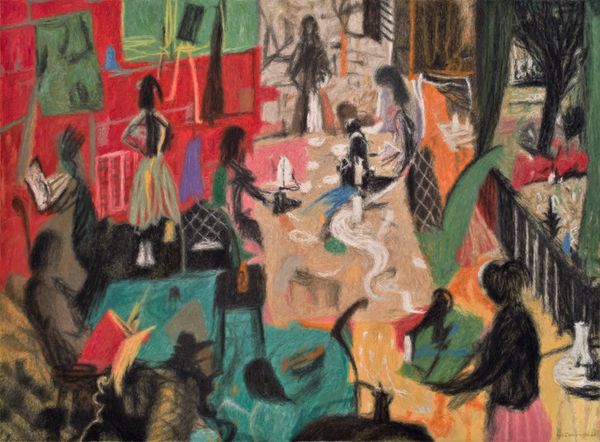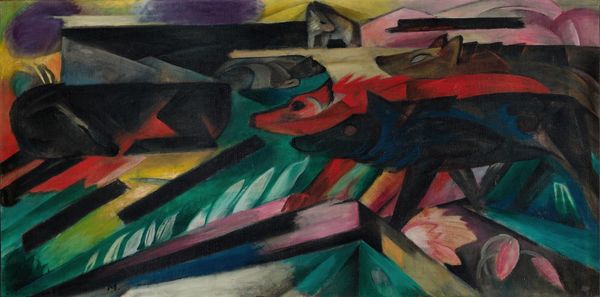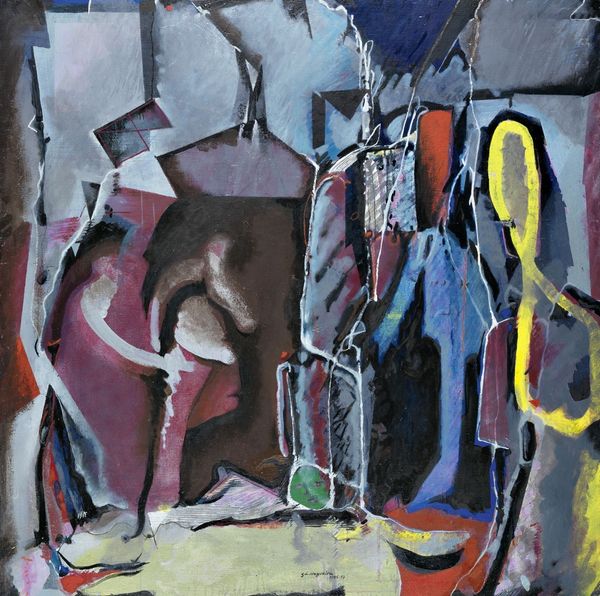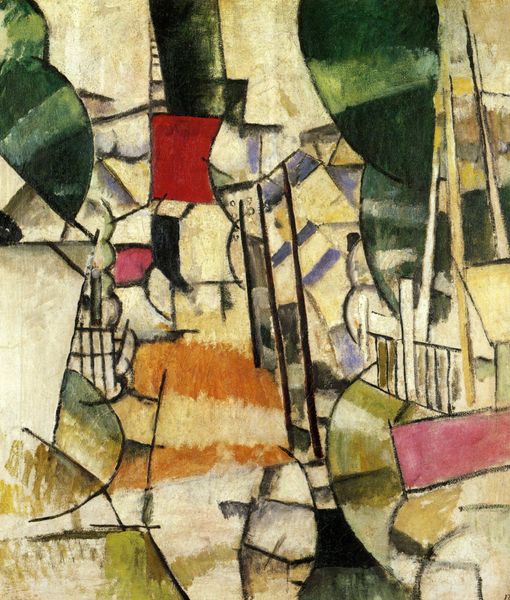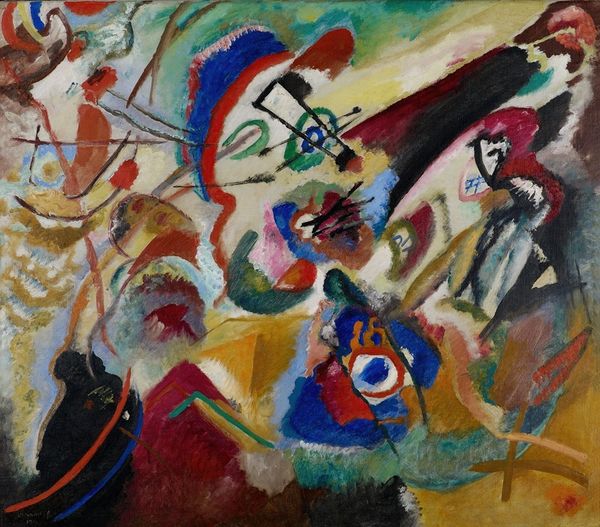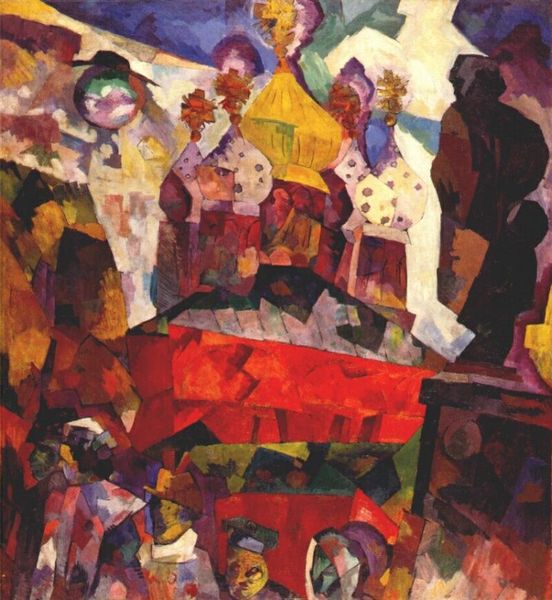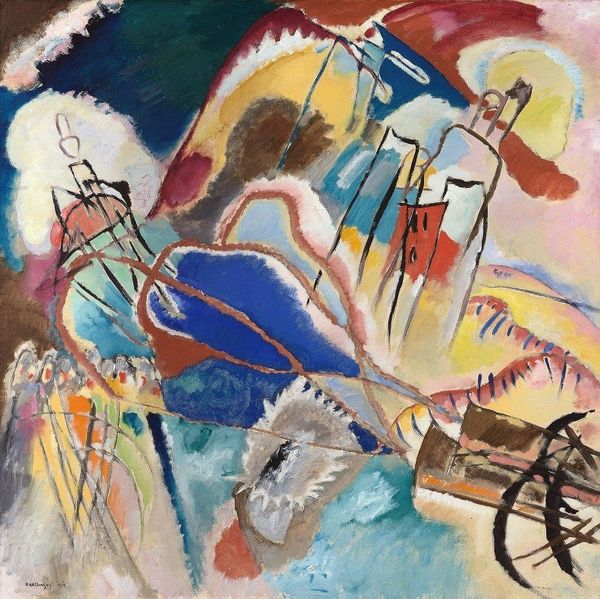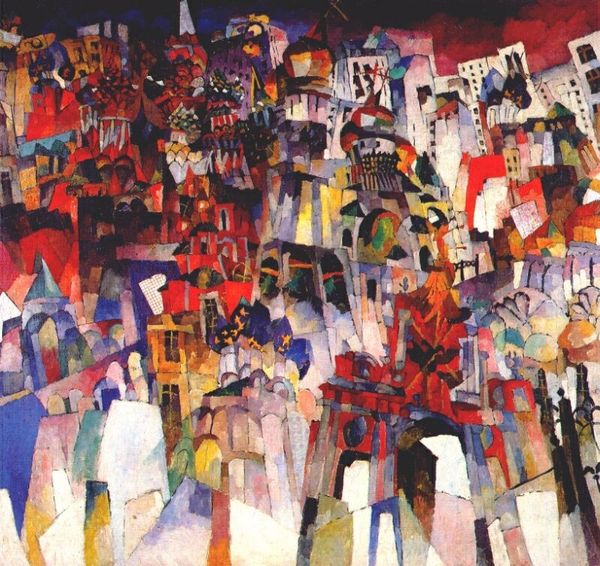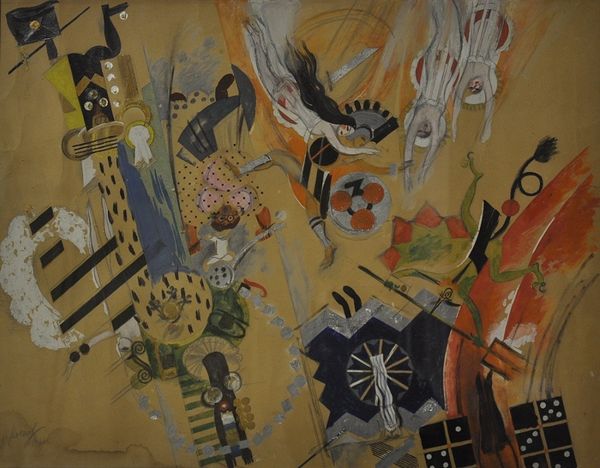
Dimensions: 45.7 x 37.8 cm
Copyright: Public domain US
Editor: So, here we have "Flags", an oil painting from 1906 by Raoul Dufy. It strikes me as incredibly chaotic, almost a joyful visual overload. The colors are so vibrant and clashing, and it's hard to make out any specific forms. What are your initial thoughts on its composition and technique? Curator: Indeed. Observe the structural arrangement: the flags are not simply depicted; they serve as blocks of color. Notice how Dufy employs impasto, building layers of oil paint to create texture. It seems as though the surface itself is activated, demanding tactile as well as optical engagement. This disrupts traditional landscape conventions. Editor: That's a good point about the texture! I was so focused on the colors I didn't fully appreciate that. The flags do become abstract shapes when you look at them closely. So how does this active surface contribute to the overall reading? Curator: It compels the viewer to engage with the materiality of paint itself. The painting is not just representing flags, but is instead actively investigating the properties and possibilities of color, texture, and form. Do you see how the gestural brushstrokes work to dissolve the clarity of the city behind? Editor: I see that now. It almost becomes a secondary element. What was once representational transforms into an exercise of visual language. So by reducing the flags and architecture to pure shapes and color, Dufy emphasizes the formal elements over narrative? Curator: Precisely. By destabilizing the established notions of representation, Dufy is able to highlight painting's autonomous potential as a constructed visual experience, not a mirror reflecting the world. Editor: That’s really fascinating! I hadn't considered how much the surface texture contributes to the deconstruction of the scene. Curator: Absolutely. A focused attention to form over subject helps open us up to the broader possibilities in what paintings can communicate.
Comments
No comments
Be the first to comment and join the conversation on the ultimate creative platform.

